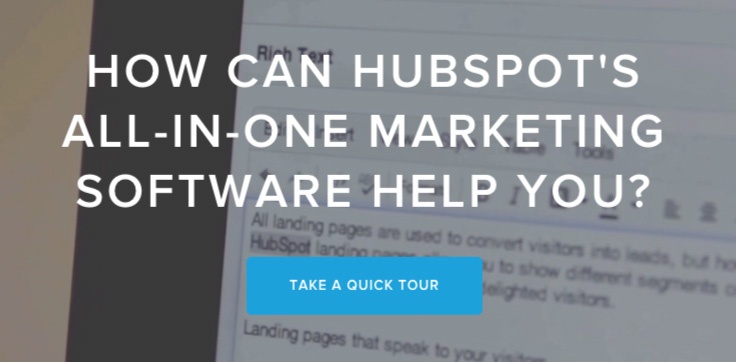How Much Time Doing Inbound Marketing Is Actually Spent In HubSpot? [New Stats]


by Marisa Dube • 3 minute read • December 17, 2015
![How Much Inbound Marketing Time Is Spent In HubSpot? [STATS]](https://www.nectafy.com/hs-fs/hubfs/Imported_Blog_Media/How-Much-Inbound-Marketing-Time-Is-Spent-In-HubSpot-STATS_jpg-1.jpg?width=720&name=How-Much-Inbound-Marketing-Time-Is-Spent-In-HubSpot-STATS_jpg-1.jpg)
Inbound marketing has revolutionized the way companies obtain leads and customers.
Instead of barraging people with annoying mailers, phone calls, and dinnertime visits from salesmen, the inbound methodology is set up to allow potential customers to find you through the helpful content you share. Inbound also unites the marketing and sales departments into a single team focused on drawing their ideal customers to their products and services rather than banging on their doors trying to convince them to be customers. (If you don't know much about inbound marketing and you're intrigued, check out these guides for a couple of quick overviews.)
Let's be honest—HubSpot has played a major role in this inbound marketing movement. Not only has the company helped educate the world about it, but they also have what they refer to as an "all-in-one" marketing software that many companies (including Nectafy) use to carry out their inbound work.
 A screenshot from HubSpot's website.
A screenshot from HubSpot's website.
But we had to ask ourselves, is HubSpot's "all-in-one" software really helping us carry out all of our inbound marketing? Several months ago, we decided to put it to the test. Could everything that encompasses inbound marketing really happen within HubSpot?
Download Now: How Our Company Put HubSpot To The Test
To get our answers, we conducted a study with a goal of determining how much time we actually spend in HubSpot for inbound marketing.
So, we analyzed about 1,123 hours of inbound marketing from July through October. This is what we found:
Of those 1,123 hours, 1% of our time was spent working in HubSpot.
Insert our jaws dropping to the floor.
That is a huge disconnect between what HubSpot claims by using the term "all-in-one" and what our time sheets tell us.
So where is that remaining 99% of our time spent? Before we dive into the numbers, let's talk about how we collected this data.
Calculating The Almighty HubSpot Vs. Inbound Marketing Ratio
In order to make our study as accurate as possible, we added specific categories to our timers so we could know exactly how we were spending our time.
Here are the main categories we used to track the time we spent doing inbound marketing and a brief explanation of each:
Blog Writing & Research
- Researching for and writing articles.
- Finding images for articles.
Content Interviews
- Interviewing for articles, offers, website copy writing, etc.
Design
- Creating and editing custom graphics, images, documents, etc.
Editing
- Editing any copy another member of the team has written.
- Editing videos.
Email Writing
- Writing marketing emails, including blog post notifications, newsletters, workflows, and thank-you emails for offers.
Meetings
- Meetings and discussions that aren't interviews (ex. weekly client meetings).
Offer Writing & Research
- Researching for and writing offers, offer landing pages, offer calls-to-action, and offer thank you pages.
- Finding images for offers.
Project Management
- Responding to and/or writing emails to clients and team members.
- Scheduling meetings.
- Adding blog posts to WordPress.
- Completing other miscellaneous project tasks.
Social Updates
- Finding content to share on social networks.
- Responding to comments/messages and interacting in conversations.
- Researching relevant hashtags.
Strategy
- Planning blog topics and updating content calendars.
- Researching keywords.
Update Web Content
- Updating content on a website.
- Updating data in a website-related application.
Web Development
- Creating or updating coding.
- Fixing functional website errors.
Working In HubSpot
- Completing work for inbound marketing within HubSpot, including scheduling social media posts, inputting images, creating landing pages, creating calls-to-action, scheduling emails, and more.
We were extremely diligent about setting our timers correctly according to the tasks we were performing and adding notes for more detail when appropriate.
There are three things we should note before continuing:
- Part of our process is to regularly analyze inbound results, so we typically meet with clients on a weekly basis to review their results. Much of that time is spent reviewing and analyzing results in HubSpot, but we categorize this time under “Meetings.”
- Our Nectafy blog as well as most of our clients’ blogs don't run on HubSpot. To draft and edit any articles, we use Google Docs. And, since we build most websites using WordPress, that's what we use for blogging—it integrates seamlessly into just about every website we build and has the capabilities to create custom functionality. To be sure I'm not miscommunicating anything: blog writing and hosting can be done in HubSpot. But, any time shown under our “Blog Writing & Research” category is time we haven't spent using HubSpot’s blog capabilities.
- Social media is a big part of our inbound strategy. We spend time:
- Researching relevant hashtags for our clients' industries.
- Curating helpful and interesting content from other authors to share.
- Responding to comments, messages, and joining conversations.
While we do schedule social posts using HubSpot, most of the time spent doing what I mentioned above does not take place in HubSpot, which is why they are timed under separate categories.
All that being said, let’s break down those 1,123 hours. We looked at four of our inbound accounts—three of those were our clients' accounts and one was our own. Below you'll find a case study of each, showing how much time we spent in HubSpot and how much time we spent doing other inbound marketing tasks.
HubSpot Vs. Inbound Marketing: 4 Case Studies
For each of the following four cases, we took a look at four months of data—from July 1 to October 30 of this year. Here’s what we found.
Case #1
- Working In HubSpot: 2%
- Blog Writing & Research: 34%
- Project Management: 22%
- Editing: 12%
- Offer Writing & Research: 8%
- Meetings: 7%
- Design: 5%
- Strategy: 4%
- Content Interviews: 3%
- Email Writing: 1%
- Social Updates: 1%
- Update Web Content: 1%
Case #2
- Working In HubSpot: 2.5%
- Blog Writing & Research: 39%
- Project Management: 19%
- Editing: 13%
- Meetings: 7%
- Offer Writing & Research: 5%
- Strategy: 4%
- Social Updates: 3%
- Content Interviews: 2%
- Email Writing: 2%
- Website Copywriting: 2%
- Update Web Content: 1%
- Design: <1%
Case #3
- Working In HubSpot: 1%
- Blog Writing & Research: 30%
- Project Management: 25%
- Design: 18%
- Editing: 11%
- Meetings: 8%
- Social Updates: 3%
- Offer Writing & Research: 2%
- Update Web Content: 1%
- Content Interviews: <1%
- Strategy: <1%
Case #4
- Working In HubSpot: <.5%
- Blog Writing & Research: 42%
- Strategy: 14%
- Editing: 11%
- Design: 9%
- Social Updates: 9%
- Project Management: 8%
- Meetings: 3%
- Offer Writing & Research: 1%
- Update Web Content: 1%
- Content Interviews: <1%
- Email Writing: <1%
- Web Development: <1%
What did we learn?
In all four cases, we spent the most time researching and writing articles—which doesn’t take place in HubSpot for us. In fact, in all four cases, work that specifically took place in HubSpot took the least amount of time.
So, according to our results, what do you really need for inbound marketing?
- Inbound strategists
- Writers
- Editors
- Project managers
- Designers
The bulk of our inbound marketing processes did not involve HubSpot. Instead, it involved several people with certain skill sets, which included strategizing, researching and writing, editing, project managing, and designing.
After looking through the results of the previous four cases, we noticed something about all of them—they were ongoing inbound accounts, meaning those time sheets show where we spent our time “maintaining” a client’s (and our own) inbound marketing. What they don’t show is where we spent most of our time when we initially launched a client’s HubSpot account—as in, started from scratch with absolutely nothing.
So, we looked at the time sheets from one of our newer accounts to see where we spent time doing what we call a “HubSpot Launch”—beginning inbound marketing with HubSpot from square one with a client.
The First Few Months Of Inbound Vs. Maintenance Of Inbound
Do the first few months of inbound marketing with HubSpot require more time within the actual software? Here’s what we found.
Case #5
From April 10 to June 30 of this year, we worked with a client on a HubSpot Launch project. Here’s how our time was spent:
- Working In HubSpot: 30%
- Project Management: 38%
- Meetings: 12%
- Strategy: 5%
- Email Writing: 5%
- Offer Writing & Research: 5%
- Editing: 4%
We used HubSpot significantly more for the technical setup of this new account, establishing lead tracking, going through the first rounds of lead scoring, and setting up landing pages. In this case, 30% of our time was actually spent within HubSpot's software. That’s the greatest amount of time documented in this article. Yet, that means that 70% of the time we spent doing a HubSpot Launch did not require us using HubSpot itself.
So how did we spend the bulk of time?
- Setting up lead scoring rules in the client’s CRM, integrating the client's CRM with HubSpot, and creating and adding new call-to-actions (CTAs) to the website.
- Writing copy for five landing pages and five workflow emails.
- Sending and responding to emails, setting up tasks, and scheduling meetings with the client.
- Participating in meetings.
Much like the other four case studies, these tasks did not require HubSpot's software.
What did we take away from this study?
1. The bulk of our inbound marketing time is spent by skilled people doing hard work outside of HubSpot's software.
2. We rely heavily on HubSpot's software for the execution and reporting of our inbound efforts, but that doesn’t mean we actually spend a lot of time in the software.
3. Much of the inbound process can be done within HubSpot, but we choose to use other programs. Here are some examples:
- We manage our content calendars in Google Sheets rather than through HubSpot’s calendar tool.
- We host the majority of our blogs on WordPress. This skews the data a bit.
- We do all of our research and recording of buyer personas through meetings, interviews, research, and Google Sheets. When finalized, we simply copy the personas into HubSpot.
I don’t want to give the wrong impression here—we are not discouraging the use of HubSpot’s software. We highly recommend the HubSpot software and are 100% onboard with their approach to inbound marketing. In fact, if we believe using HubSpot would be wise for your company, we’ll be the first to tell you and will go to great lengths to show you why.
But for us, HubSpot is not an "all-in-one" solution. It’s more like a scoreboard—while we get every statistic and result from it, all the real work is done on the track and field.
